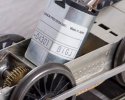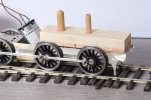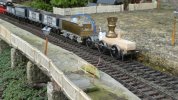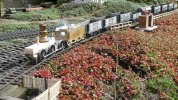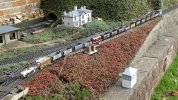simond
Western Thunderer
In spite of my best efforts the chassis still had a pronounced squeak on every revolution of the wheels. This came from one crank pin (rear left) - I had already opened up the hole in the side rod here but obviously not enough. So the tiniest amount of work with a five-sided broach, maybe half a thou added to the diameter of the hole, has pretty much removed the squeak. This means, I have ended up enlarging the hole in one boss by about 2 or 3 thou in all. The other five bosses are still untouched. I don't know whether this is typical or if I need to find a better way to set up axle bushes and crank pins. I think I can be a perfectionist at times but a non-modelling friend suggests more likely all the time.
might be a bit late, but I have learned that making the bush smaller is better than making the hole bigger. New bushes are cheaper than new rods…
that said, easing one rod hole is not at all unusual.


 . . . I suspect I could get away with a shallower flange on an 0-F wheel (which would look better on a loco like the the MW class F), but a narrower tread is going to drop into an 0-MF crossing vee just like an 0-F wheel drops into an 0-F one.
. . . I suspect I could get away with a shallower flange on an 0-F wheel (which would look better on a loco like the the MW class F), but a narrower tread is going to drop into an 0-MF crossing vee just like an 0-F wheel drops into an 0-F one.
